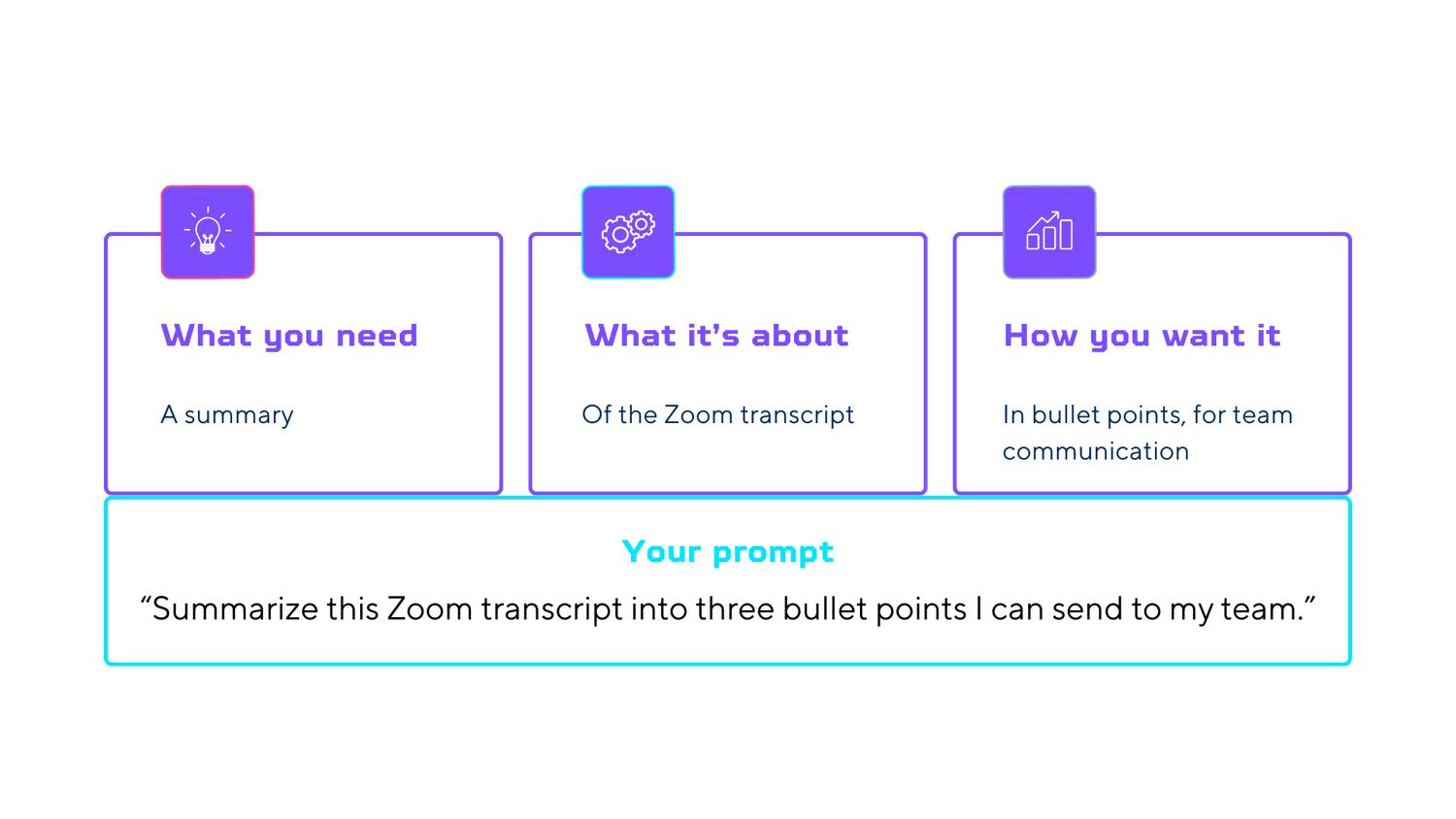
jenn:gosselin
blog
real:world AI for real:work.
Practical tips, prompts, and strategies to help you use AI with clarity, confidence, and purpose.

Learn Prompting - Zero Shot
Clearer Prompts = Clearer Output
Google just released a 69-page whitepaper on prompt engineering. It’s packed with frameworks, strategies, and examples for getting better results from large language models like Gemini and ChatGPT.
It’s also packed with tech jargon. Yawn.
Here’s the good news: you don’t need to read all 69 pages.
You just need the right parts—and someone who’s already sifted through it to pull out what matters.
That’s where I come in.
I read the whole thing so you don’t have to. I pulled out the pieces that can actually help you work smarter with AI—especially if you use tools like ChatGPT to:
Write better emails or summaries
Plan projects, content, or reports
Think through decisions more clearly
Simplify complex topics
Automate repetitive tasks
If you’ve ever typed a question into an AI tool and thought, “That’s not what I meant,” this post is for you.
Let’s start with the basics minus the fluff.
What is a Prompt?
A prompt is just what you type (or say) to an AI tool. It’s the input you give it; the way you ask for help.
Whenever you tell ChatGPT or Gemini to summarize something, write an email, or plan a project, you’re prompting.
What is Prompt Engineering?
Think of it as better prompting. Prompt engineering is just the skill of asking AI for what you need in a way it understands. It’s not coding. It’s not technical. It’s simply getting more specific and intentional about what you’re asking.
Instead of saying: “Can you help me with this?”
You’d say: “Turn this outline into three bullet points I can use in a meeting.”
Better inputs = better outputs.
The way I think about it is you have a new virtual assistant and they don't know what you know, they don't know what you want or how you want it, but they're REALLY, REALLY good at doing exactly what you tell them to do.
So, if you're as clear as possible with them, you can get them to do some really outstanding work to help you out.
Why Should You Care?
Because if your prompt is even a slightly bit better, it can save you time, give you better answers, and make the entire experience feel more useful.
Clearer prompts = clearer output.
When you get in the habit of prompting with more intention, everything changes.
So, let's start at the most basic: zero-shot prompting.
What is Zero-Shot Prompting?
This is where I suggest we start, and where a lot of people get stuck.
A zero-shot prompt is when you ask AI to do something without giving it any examples of what you want. You're asking it to figure it out based on your instructions alone.
That’s why it’s called “zero-shot.” You’re giving the tool zero examples or samples to follow. You’re just describing the task and the outcome you want.
“Turn this project brief into a short paragraph I can use in a team chat update.”
“Take this list of tasks and sort them by urgency and importance.”
“Draft a one-slide summary of this report for leadership.”
“Write three bullet points to explain this concept to a non-technical colleague.”
These prompts work because they’re clear. They describe the task, the topic, and the format you want—without overcomplicating it.
Here’s a simple structure you can use to create your own:

When to Use and Not Use Zero-Shot Prompting
Zero-shot prompts are great for everyday tasks where the goal is clear and the outcome is simple.
Here’s when they work really well:
When you're short on time and just need to get something started
When the task is straightforward, like summarizing, outlining, or rewording
When you're not sure how to begin but know what you want in the end
When you want a quick draft you can refine or personalize later
I always think of "one and done". I don't need anything further than the first response because it is that simple of a request.
You don’t need to overthink it. If you can describe what you want and why you need it, you’re already halfway there.
When should you avoid zero-shot prompts?
If the task is complex, unfamiliar, or high-stakes, it helps to give more structure. That’s when examples, reference points, or step-by-step instructions can really improve the result. (Don't worry, those are coming up future posts.)
But for most of your daily work? Zero-shot is a solid go-to.
Here's a snippet:
"The LLM is operationalized to do this over and over again, adding the previously predicted token to the end of the sequential text for predicting the following token."
Now aren't you glad you've subscribed the AI Business Strategy Lab?
My next post goes a bit deeper into prompting. You don't want to miss it.
subscribe:now
Get my best prompts and strategies sent straight to your inbox.
LCopyright: Jenn Gosselin, LLC. All rights reserved. 2025
Lorem ipsum dolor sit amet, consectetur adipisicing elit. Autem dolore, alias, numquam enim ab voluptate id quam harum ducimus cupiditate similique quisquam et deserunt, recusandae.

